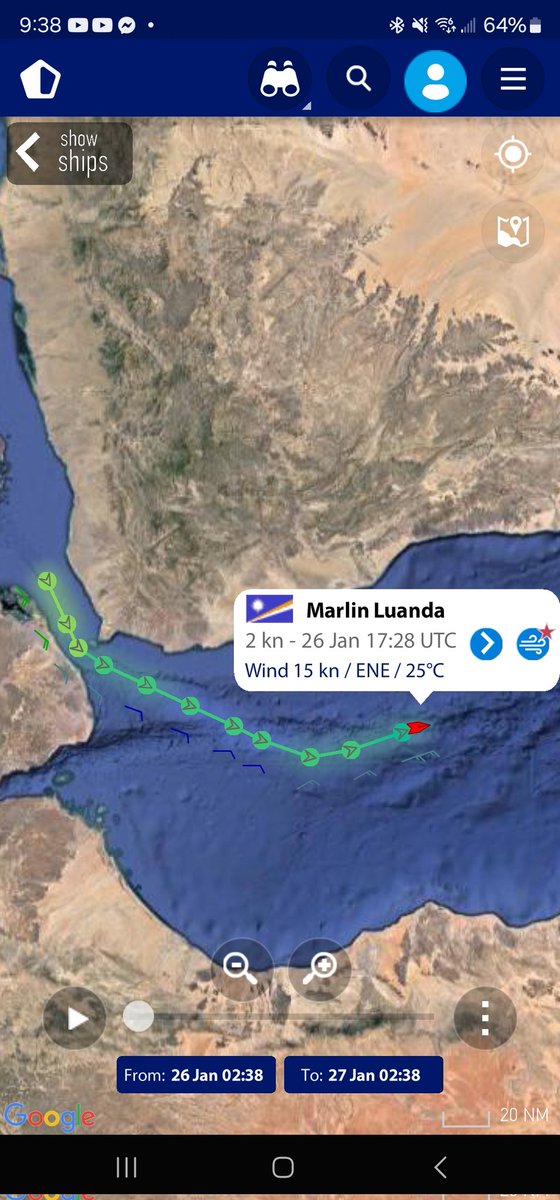1/So, let's talk about the #GazaPier.
The @DeptofDefense has set the parameters for the op.
1️⃣ No boots on the ground
2️⃣ An unannounced level of aid over the shore.
Joint Logisitics Over The Shore (JLOTS) is designed to support military operations for a finite period of time.
The @DeptofDefense has set the parameters for the op.
1️⃣ No boots on the ground
2️⃣ An unannounced level of aid over the shore.
Joint Logisitics Over The Shore (JLOTS) is designed to support military operations for a finite period of time.
https://twitter.com/TreyYingst/status/1794365082161569911
2/To conduct this op, @DeptofDefense activated a total of 11 vessels.
4 vessels activated from @DOTMARAD & @MSCSealift: USNS Benavidez, Lopez, Bobo (which suffered an engine fire & returned) & Stockham
1 chartered: MV Sagamore
3 Army LSVs & 3 Army LCUs
Plus pier & lighterage




4 vessels activated from @DOTMARAD & @MSCSealift: USNS Benavidez, Lopez, Bobo (which suffered an engine fire & returned) & Stockham
1 chartered: MV Sagamore
3 Army LSVs & 3 Army LCUs
Plus pier & lighterage




3/JLOTS is a symphony of movement from ships offloading offshore onto Army and Navy connectors and moving the cargo ashore.
The issue is the open nature of the Gaza beach and the limitation of JLOTS in sea states over Force 3 (>10 kts wind & 3ft seas)




The issue is the open nature of the Gaza beach and the limitation of JLOTS in sea states over Force 3 (>10 kts wind & 3ft seas)




4/Weather, along with ship issues have delayed the implementation of JLOTS and so far, about 1000 tons of aid has been delivered.
That is equivalent to about 50 TEU (twenty foot equivalent units) containers.
That is equivalent to about 50 TEU (twenty foot equivalent units) containers.

5/Now we have several of the watercraft breaking loose and coming ashore.
The image is that of a US Army landing craft medium (LCM) and a powered ligheratge section ashore in Israel. The latter broke loose and came ashore and the LCM attempted to tow it off.



The image is that of a US Army landing craft medium (LCM) and a powered ligheratge section ashore in Israel. The latter broke loose and came ashore and the LCM attempted to tow it off.



6/The small amount of cargo and the nature of the open water off Gaza should have informed @DeptofDefense to adopt alternative methods than this.
For example, USNS Lopez, a former Maritime Prepositioning Ship, is designed to offload at anchor offshore.
For example, USNS Lopez, a former Maritime Prepositioning Ship, is designed to offload at anchor offshore.

7/Lopez can load and offload any relief aid via its ship cranes. It can carry causeway (barge) ferries which could beach themselves and therefore deliver the aid without the need for an offshore or Trident pier.
Some Army LSVs could have supplemented this evolution.



Some Army LSVs could have supplemented this evolution.



8/This style of operation is flexible and can be moved more easily than redeploying the Trident pier and nearly a dozen vessels.
There are even more options available from the commercial sector with Tugs, barges and Jack up rigs.
There are even more options available from the commercial sector with Tugs, barges and Jack up rigs.

9/Has the Gaza Pier Been Beached? | Army Watercraft come ashore off Gaza and Israel
1️⃣ What is #JLOTS?
2️⃣ US Army Watercraft Ashore
3️⃣ Alternate Scenario to Current JLOTS
1️⃣ What is #JLOTS?
2️⃣ US Army Watercraft Ashore
3️⃣ Alternate Scenario to Current JLOTS
Now appears that a section of the #GazaPier is ashore in Israel.
This is either the sea or beach end of the Trident Pier with quite a few vehicles and equipment on board.
This is the difficulty in conducting such an op in an open sea with no protection from seas/wind.




This is either the sea or beach end of the Trident Pier with quite a few vehicles and equipment on board.
This is the difficulty in conducting such an op in an open sea with no protection from seas/wind.




• • •
Missing some Tweet in this thread? You can try to
force a refresh



































